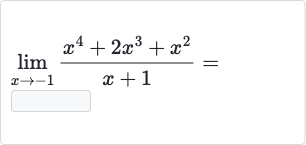AI tutor
Full solution
Q.
- Identify Function and Point: Identify the function and the point at which we need to find the limit.We are given the function and we need to find the limit as approaches .
- Check Indeterminate Form: Check if direct substitution of into the function yields an indeterminate form.This is an indeterminate form, so we cannot simply substitute to find the limit.
- Factor Numerator: Factor the numerator to simplify the expression.The numerator is a polynomial that can be factored by grouping.Notice that is a perfect square trinomial and can be factored further.
- Cancel Common Factor: Cancel out the common factor from the numerator and the denominator.The common factor is , which can be canceled out.After canceling out , we get:
- Substitute and Find Limit: Substitute into the simplified function to find the limit.

